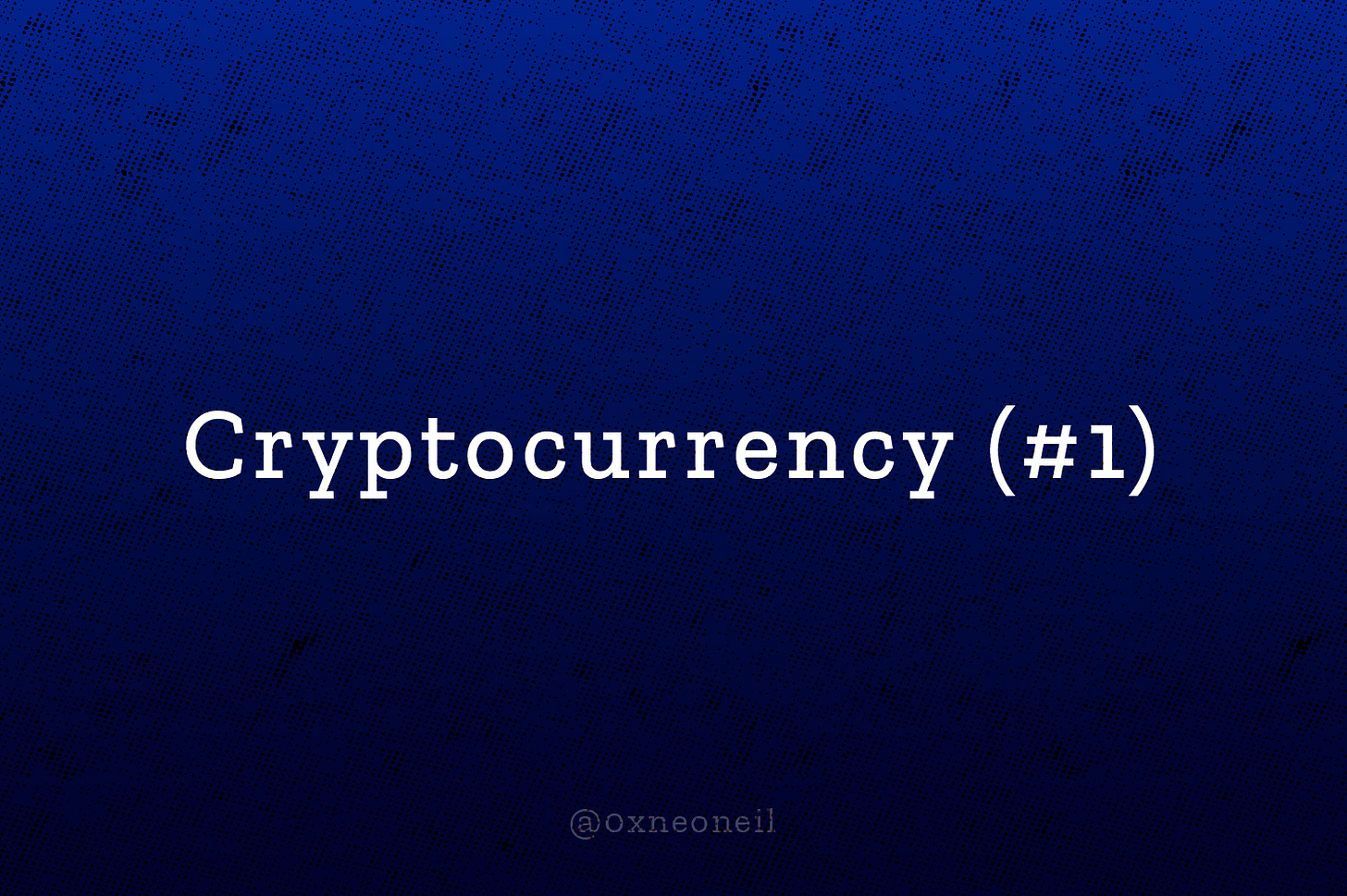Understanding Cryptocurrency (#1)
Cryptocurrency, Crypto-currency or Crypto, in short, is a series of binary data issued by the blockchain, working as a medium of exchange and rewards for miners, blockchain validators, investors, etc.
Hello everyone,
It’s me again, Neo — Admin — Community Manager of Optimus Finance and Growth Marketing of LECLE Vietnam.
Today we will find out a term that is so familiar to all of us. If you know about Blockchain or Bitcoin, you will hear about Cryptocurrency or Crypto. In 2021, multiple mainstream media were constantly broadcasting about Bitcoin, cryptocurrency, the crypto bubble, the digital gold rush, etc. Many wonder what crypto is. What is cryptocurrency? What’s all this hype about?
We will explore Cryptocurrency and everything around it. Let’s get started!
1. What is Cryptocurrency?
Cryptocurrency, Crypto-currency or Crypto, in short, is a series of binary data issued by the blockchain, working as a medium of exchange and rewards for miners, blockchain validators, investors, etc. Cryptocurrency means cryptography and currency.
Cryptography: The blockchain uses complicated cryptography to verify, control and secure every crypto transaction.
Currency: In simple terms, it is a medium of exchange for goods and services.
Crypto uses blockchain technology that includes multiple computers around the globe, creating a decentralized and high-security network among computers. The computer network stores all blockchain information and ensures nobody can interfere with changing the data.
2. Who invented Cryptocurrency? What was the first cryptocurrency?
Bitcoin was the first cryptocurrency to ever exist. Bitcoin was first introduced on 31 October 2008 by Satoshi Nakamoto-the mysterious Bitcoin creator. Up to this moment, the identity of Satoshi Nakamoto has never been unknown.
3. What is the difference between Cryptocurrency, Digital currency vs Fiat?
Cryptocurrency uses cryptographic techniques to prevent the system from fraud, attacks, and counterfeiting. Bitcoin was the first cryptocurrency invented by Satoshi Nakamoto in 2008. The value of cryptocurrency is determined by the community using it or the faith.
Digital currency is a digital form of fiat money issued by a government. The number you have in your bank account is considered a digital currency. Users can transfer money, withdraw from ATMs and pay for services.
Fiat money, so-called money, is considered a medium of exchange often established by a centralized entity such as the government. It has a long history since it replaced commodity-based currencies.
4. What is Cryptocurrency used for?
There have been numerous use cases for crypto. Some of the few are:
DeFi (Decentralized Finance): Yield Farming, Lending & Borrowing.
Medium of exchange.
Store-of-value asset.
Payment.
5. How does Cryptocurrency work?
Cryptocurrencies run on blockchains, with the majority also involved with smart contracts. In detail, cryptocurrency works in a process called cryptography. Cryptography keeps the data on blockchain secure, so making cryptocurrencies discreet and safe to use.
6. How does Cryptocurrency gain value?
Each cryptocurrency is attached to a specific project or product which makes it valuable. Cryptocurrency gains value in a variety of ways, mainly from its tokenomics design and product model. For example:
BTC is a deflationary token (tokenomics design), which makes it scarcer and more worthy over time. At the same time, BTC gains value as a store-of-value asset (product model).
ETH is not only deflationary and available for most DeFi interactions like Farming and Staking (tokenomics design), but it also gains value as the leading DeFi blockchain as well as the indicator of DeFi (product model).
7. Advantages and disadvantages of Cryptocurrency
Cryptocurrency has survived for a while. Even though cryptocurrency is beneficial for various purposes and has improved numerous points in the current monetary system, it is still flawed and possesses negative sides.
7.1. Advantages
Accessible.
Flexible.
Transparent.
Massive potential upside.
Decentralized.
7.2. Disadvantages
Volatile.
Risky/Vulnerable.
Unregulated.
Low liquidity.
8. Different types of Cryptocurrency
8.1. Coin and Token
A coin represents an independent blockchain and acts like a native currency of the blockchain. Every blockchain has only one unique coin. It is used for transaction fees, financial services, security, and Dapp development inside the blockchain.
For example:
The Bitcoin network has BTC.
The Ethereum blockchain has ETH coin
The ICON blockchain has ICX coin.
BNB Chain (formerly Binance Smart Chain) has BNB coin.
Unlike coins, cryptocurrency tokens are invented to serve utility functions. Tokens don’t have any separate blockchain, they are issued inside the blockchain.
For examples:
FIN (Optimus Token) is a utility token since it can be stored and transferred inside the ICON blockchain.
UNI (Uniswap) is a utility token since it can be stored and transferred inside Ethereum blockchain.
They both don’t have any separate blockchains, such as Optimus blockchain or Uniswap blockchain.
Whenever some projects want to expand beyond the blockchain, they can develop their own blockchains to migrate their tokens. This means the tokens will be called coins.
For example: Before the mainnet, SOL (Solana) was the utility token on the Ethereum blockchain. After the mainnet, Solana had an independent blockchain, therefore, SOL became the coin representing the Solana blockchain. This means other tokens can be issued on Solana.
8.2. Bitcoin & Altcoin
Bitcoin is the first cryptocurrency, leading the crypto market. Therefore, the Bitcoin price has a huge impact on other token prices.
Altcoins (Alternative-coin) refer to all coins/tokens, except for Bitcoin.
Bitcoin Dominance is a metric measuring the Bitcoin market cap relative to the market cap of other existing coins/tokens. It indicates the cash flow is going to Bitcoin or other altcoins.
Investors often use this metric to anticipate the altcoin season to gain the most optimized profits.
9. How to buy Cryptocurrencies on Crypto Exchange
Investors can buy and sell cryptocurrencies on various exchanges. With advanced blockchain technologies, there are two types of exchanges:
Centralized Exchange (CEX) is governed by a third-party organization. Investors don’t own the private key of their crypto assets, the exchange owners manage those assets. Users have IDs and passwords to log in to your exchange account, and they are required to complete the KYC (know your customer) process given by governments. For example: Binance, Huobi, Gate.io, Crypto.com,…
Decentralized Exchange (DEX) is a platform allowing users to trade cryptocurrencies without any intermediary or centralized entity. Users have their private keys that prove the ownership of the crypto wallets. For example: Uniswap, Pancakeswap, Balanced,…
10. How to store Cryptocurrencies with Crypto Wallet
Hot wallets or Non-custodial wallets are places to store coins/tokens online, where users have to keep private keys to protect their own crypto assets. There are some popular wallets for storing crypto assets, namely: Hanawallet, Trust Wallet, Metamask,…
Cold wallets exist in the physical shape (usually as a USB) that require multiple security steps. Investors often use cold wallets for long-term coins/tokens storage. This complexity enhances the security of the wallet in return. Some popular cold wallets are Ledger, Trezos,…
Wallets on exchanges or Custodial wallets, basically, users don’t own any private key. They access their funds with a password kept by the exchange. Since investors store their crypto assets on exchanges, there are potential risks of scams and shutdowns. Binance, Okex, and Coinbase are the most popular centralized exchanges.
Therefore, investors use various types of exchange according to their usage.
… We will continue with Understanding Cryptocurrency (#2) soon…
What about your thoughts? If you want to know further about cryptocurrency, don’t hesitate to share with us! 😀
This post is for educational purposes only. All materials I used were the different reference sources. Hope you like and follow us and feel free to reach out to us if there is an exchange of information. Cheers! 🍻
#cryptocurrency #defi #blockchain #coin









